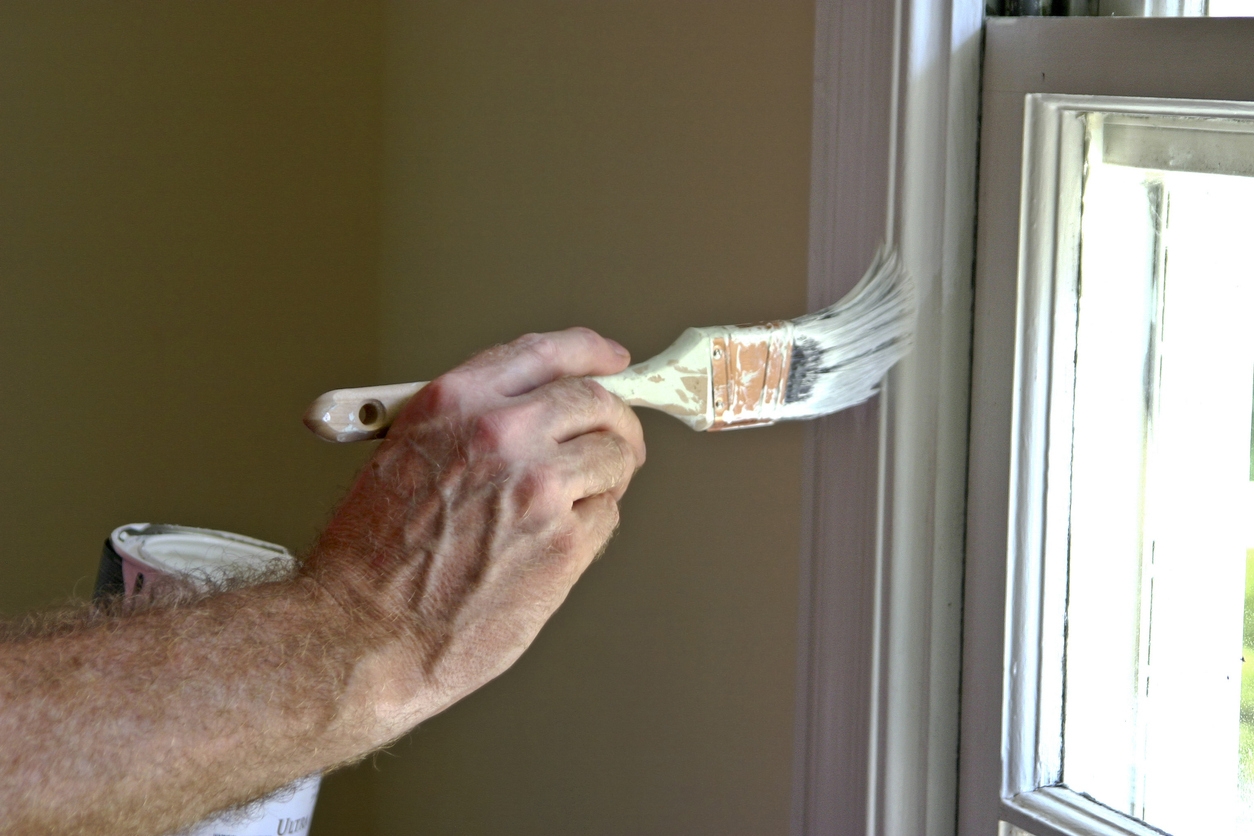Have you decided to hire a contractor for exterior painting? If your home’s exterior needs repainting, you know it’s a big job best left to professionals.
While DIY painting might seem easy, it’s actually quite complex. Small projects like cabinets are manageable, but larger jobs like exterior painting require a professional finish. Hiring experts ensure your home looks brand new.
Remember, not all painting contractors are the same. They differ in experience, skills, services, workforce, and product quality.
Here’s how you can hire the right contractor for your needs:
Ensure they have a license.
When choosing a painting contractor, one of the first things you should check is whether they have a proper license. A license means that the contractor has met certain standards set by the state or local government. It’s proof that they have the necessary skills, knowledge, and experience to do the job right. Licensed contractors are also more likely to follow safety regulations and industry standards, which means better quality work and fewer risks for you.
Unlicensed contractors might offer lower prices, which can come with significant risks. They might lack the proper training or use substandard materials, leading to poor-quality work that needs to be redone. Moreover, you might have little to no recourse if something goes wrong because unlicensed contractors often don’t have insurance.
Verifying a contractor’s license is easy and only takes a few minutes. Here’s how you can do it:
- Ask for their license number. A reputable contractor should be willing to provide it without hesitation. Once you have it, you can look it up online.
- Check online databases. Most states have an online database where you can verify a contractor’s license. Simply enter the license number to see if it’s valid and up to date.
- Contact local authorities. If you can’t find an online database, you can call your local licensing authority to verify the contractor’s credentials.
When you check a contractor’s license, ensure it’s:
- Valid: The license should be current and not expired.
- Specific to your project: Some licenses are specific to certain types of work. Make sure the contractor’s license covers painting services.
- Free of complaints: Check for any complaints or disciplinary actions against the contractor. This information can usually be found in the licensing database.
Ask for a free estimate.
Before you hire a painting contractor, always ask for a free estimate. It’s a simple step that can help you understand what the project will entail and how much it will cost. It helps you budget better and ensures there are no surprises later on. Plus, it’s a great way to compare different contractors and find the best fit for your needs.
A good estimate should include:
- A detailed breakdown of costs includes labor, materials, and additional fees.
- Scope of work: A clear description of what the contractor will do, such as surface preparation, number of coats, and type of paint.
- Timeline: An estimated start and completion date for the project.
- Terms and conditions: Any other important details, such as payment terms and warranty information.
When you have estimates from a few contractors, compare them side by side. Don’t just look at the price—consider the quality of materials, the contractor’s experience, and what’s included in the scope of work. Sometimes, a slightly higher estimate might be worth it for better quality and reliability.
To get accurate estimates:
- Be clear about your needs: Explain exactly what you want done, including any specific preferences or requirements.
- Ask questions: If something isn’t clear in the estimate, don’t hesitate to ask for clarification.
- Get it in writing: Always get the estimate in writing to avoid misunderstandings later.
Asking for a free estimate is an easy way to plan your painting project and ensure you get the best value for your money. It’s a small step that can make a big difference in the outcome of your project.
Screen and interview contractors.
Now, it’s not enough that your contractor is good on paper. To make sure that you hire the best, you must screen each of them. Screening and interviewing them can help you get a sense of their professionalism and see if they are reliable and suitable for your project.
Screening and interviewing help you gauge the contractor’s professionalism, reliability, and suitability for your project. It’s your chance to ask questions, understand their approach, and determine whether you feel comfortable working with them.
When you meet with a contractor, ask these critical questions:
- How long have you been in business?
- Can you provide references?
- What is your process for this project?
- Do you hire your team, or are they subcontractors?
- Do you offer a warranty?
- What is your estimated timeline?
- Do you have specific paints you use?
- How does your team handle paint spills and drips?
When you’re interviewing them, watch out for these red flags:
- Vague answers: If a contractor is evasive or unclear about their process or costs, it’s a red flag.
- Lack of documentation: A professional contractor should have no problem providing licenses, insurance, and detailed estimates.
- High-pressure tactics: Be wary of contractors who push you to make quick decisions without giving you time to think things over.
Ask for references.
When choosing a painting contractor, asking for references is a crucial step. References give you firsthand accounts of what it’s like to work with the contractor. They can tell you if the contractor is dependable, does quality work, and stays on schedule. It’s a straightforward way to get honest feedback.
When you talk to references, here are some key questions to ask:
- Were you satisfied with the work? Find out if the final result met their expectations.
- Was the project completed on time? Timeliness is crucial for any project, so ask if the contractor stuck to the agreed timeline.
- How was the communication? Ask if the contractor was easy to reach and keep them informed throughout the process.
- Were there any issues? Ask how the contractor handled any problems that came up.
- Would you hire them again? If they would hire the contractor again, it’s a good sign of their satisfaction.
Get important details in writing.
When hiring a painting contractor, always get important details in writing. Outlining the project’s specifics helps prevent misunderstandings and disputes.
What should be included in the contract?
- Detailed scope of work: Clearly describe what the contractor will do, including surface preparation, number of paint coats, and cleanup.
- Materials and costs: List the materials to be used and their costs. This includes the type and brand of paint, primer, and any other supplies.
- Project timeline: Include start and completion dates. This helps you plan and ensures the contractor stays on schedule.
- Payment terms: Specify how and when payments will be made. Include the total cost, deposit amount, and payment schedule.
- Warranty information: Detail any warranties or guarantees on the work. This shows the contractor’s commitment to quality.
- Additional terms and conditions: Include any other important details, such as how to handle unexpected issues or additional tasks.
Clear up additional tasks.
Before your painting project begins, it would help both parties to know what your chosen painting contractor is expected to do. Aside from painting the walls, these are common additional tasks to consider:
- Surface preparation: This includes cleaning, sanding, and priming the surfaces to be painted. Proper preparation is crucial for a smooth, long-lasting finish.
- Repairs: Before painting, small repairs, such as filling holes or fixing cracks in walls, might be needed.
- Moving furniture and covering areas: Ask if the contractor will move furniture and cover floors and other areas to protect them from paint splatters.
- Cleanup: Clarify if the contractor will handle the cleanup after the job is done, including removing any paint spills and disposing of materials.
Including these additional tasks in the contract can help ensure that everyone knows what to expect and avoid surprises during the job.
Ensure they offer a warranty.
Do not forget the warranty! Do not assume that just because you have hired the best contractor in town, you do not need a warranty. You still do need one. Any reputable contractor will not hesitate to provide you with a warranty for their work because they are confident about the quality of the services they render. A warranty will be useful if there’s a fault of workmanship in the final paint job, and your contractors will fix it for free or for little cost.
There are two types of warranties:
- Workmanship warranty: This covers any problems due to the contractor’s work, such as peeling or blistering paint. It typically lasts for a certain period, like 1-3 years.
- Material warranty: Some warranties also cover the materials used, like the paint itself. This ensures that any defects in the paint are also addressed.
Here’s what to look for in a warranty:
- Coverage details: Make sure you understand what is and isn’t covered. This includes specific issues like peeling, fading, or chipping.
- Duration: Check how long the warranty lasts. A longer warranty indicates greater confidence in the quality of work and materials.
- Process for claims: Ask how you would make a claim if needed. Knowing the process upfront makes it easier if any issues arise.
Ensure the warranty details are included in the written contract. Verbal promises can be easily forgotten or disputed. Always check the fine print—carefully read the warranty terms and conditions to avoid any misunderstandings. If anything is unclear, ask the contractor to explain. It’s better to clarify before work begins.
Avoid making a large downpayment.
Finally, never make a sizeable down payment or a full payment to get quality work if you want everything in your control. Keep the initial payment small to help ensure that the contractor stays committed to delivering quality work throughout the project.
It’s common to pay a small deposit upfront, typically 10-20% of the total cost. This covers initial materials expenses and shows your commitment to the project. Instead of a large downpayment, arrange for progress payments. These are smaller payments made at specific milestones during the project, such as after preparation, halfway through, and upon completion.
You should hold back the final payment only when your job is completed to your satisfaction. When payments are tied to progress and completion, the contractor is incentivized to do high-quality work and finish on time.
Conclusion
Choosing the right painting contractor is crucial for a successful and stress-free project. By following these tips, you can confidently select a contractor who meets your needs.
For top-notch painting services, trust Bay Area Custom Painting. Contact us today by filling out the online form or by calling 925-294-8062 for a free estimate, and let us help you transform your home’s exterior with our expert craftsmanship and commitment to quality.



